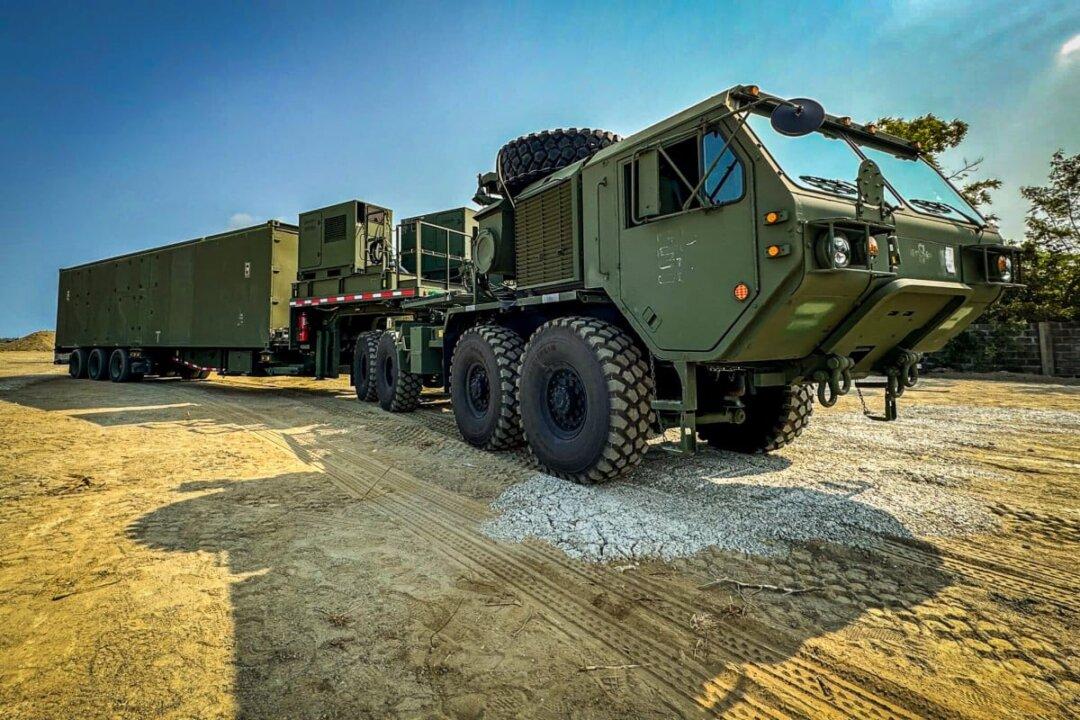Beijing recently condemned the U.S. deployment of Typhon missile launchers in the Philippines as a dangerous move that could spark conflict. The anger of the communist regime shows that it is afraid of deterrence.
The immediate event that triggered Beijing’s protest in mid-February was the news that the United States had moved the missile launchers to an undisclosed site on Luzon island in January.
Washington initially deployed its Typhon missile system in April 2024 for drills, the first time since the Cold War that the intermediate-range, land-based launchers were hosted outside U.S. territory.
However, the United States has now moved the weaponry further inland, with no immediate plan to take it back to the U.S. homeland.
Therefore, these missile launchers effectively remain in the Philippines for U.S. use. That explains why they are thorns in Beijing’s eyes.
Typhon can fire Tomahawk cruise missiles, which have a 1,000-mile range, and Standard Missile-6 rounds with a 290-mile range. From the Philippines, the rockets can cover most of the South China Sea and Philippine Sea, as well as many parts of China’s Southern and Eastern Theater Commands. This puts nearly all of China’s major naval bases within range.
Land-based systems such as Typhon respond faster and hold their ground, creating a stable backbone for deterrence.
This strategy rests on the First Island Chain, stretching from Japan through Taiwan and the Philippines to Borneo—a strategic barrier that limits the Chinese navy and helps Washington and its allies keep watch over the Pacific. If the Chinese regime pierces that line, it gains open access and the ability to project power toward Japan and Australia, altering the balance in the region.
China’s live-fire naval drills in February 2025 in the waters between Australia and New Zealand further demonstrated the regime’s ambition. Armed with ballistic missiles, the exercises disrupted dozens of commercial flights, forcing airlines to reroute on short notice.
Proven at the White Sands Missile Range test site, Typhon has the ability to hit moving ground targets and can be quickly transported by sea, giving U.S. forces an advantage in coastal and amphibious scenarios.
Although Beijing calls the Typhon’s deployment a serious escalation, analysts point to the Chinese regime’s territorial moves and aggression in the South China Sea as the driver of rising tensions. The deployment of the Typhon system in the Philippines simply highlights the consequences of such behaviors.
Japanese leaders have already inspected these systems in the United States, signaling closer military collaboration. If deployed in Japan, they’ll join the nation’s upgraded Type 12 anti-ship missiles and high-speed gliding munitions, warning Chinese vessels from the East China Sea to the Taiwan Strait.
Placed together along the First Island Chain—in both the Philippines and Japan—Typhon and Dark Eagle would bracket the northern and southern edges of the Taiwan Strait, effectively covering that entire defensive perimeter. High-value Chinese targets, from command centers to naval assets, could be struck in an instant, even without direct support from U.S. warships.
Behind this network lie the Second and Third Island Chains, extending from Japan to Guam and onward toward Hawaii and New Zealand, forming layered defenses that further constrain Beijing’s reach into the Indo-Pacific.
These deployments aim to prevent conflict by increasing the cost of aggression. Beijing’s criticism shows that the message is getting through.








